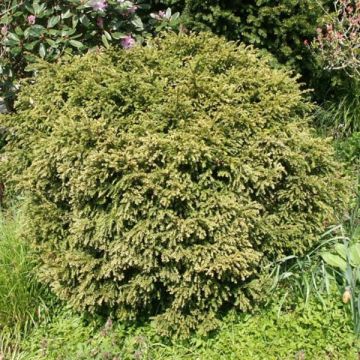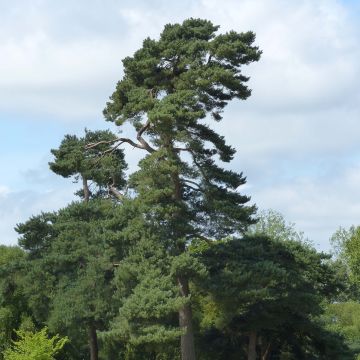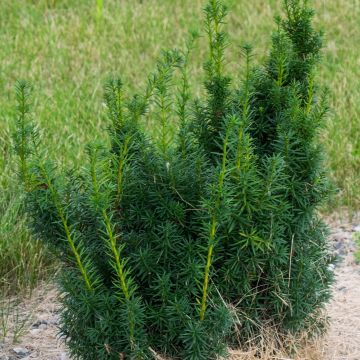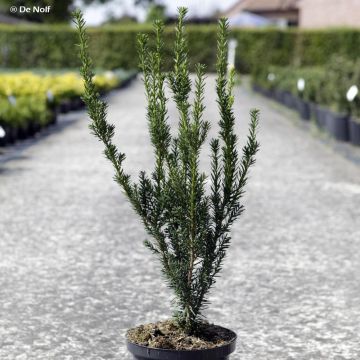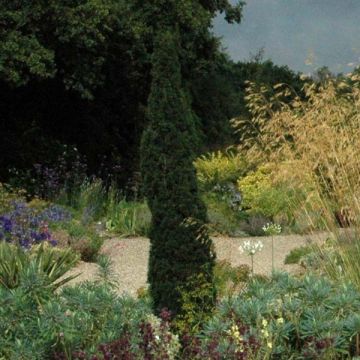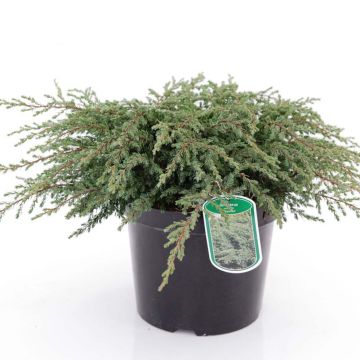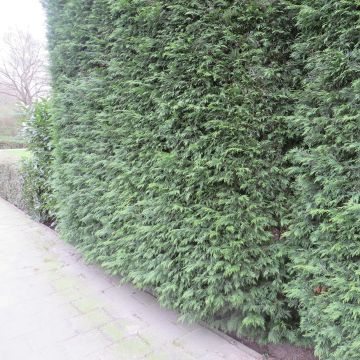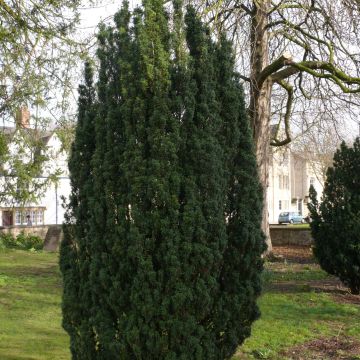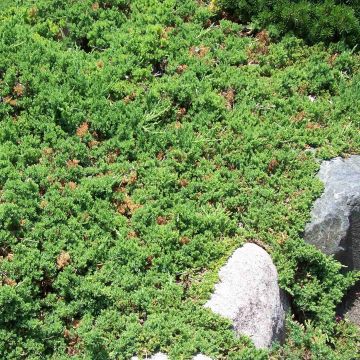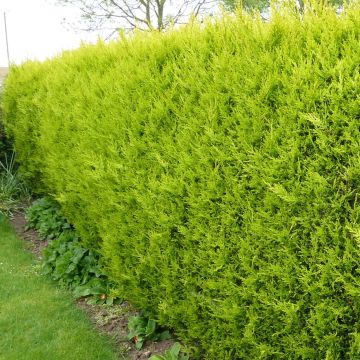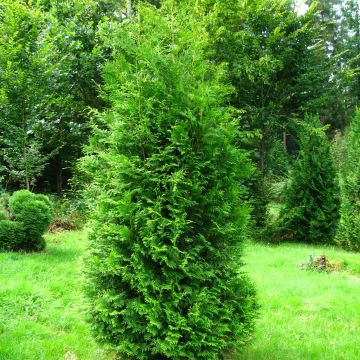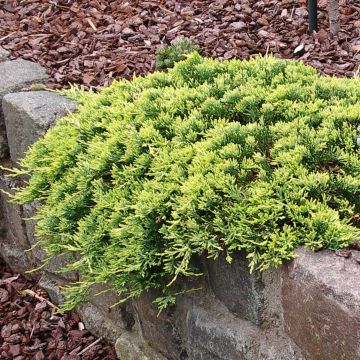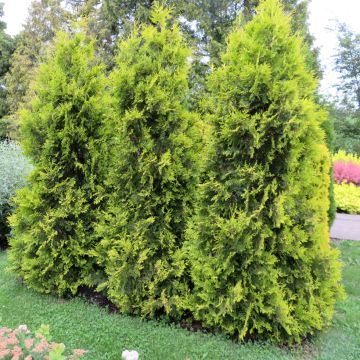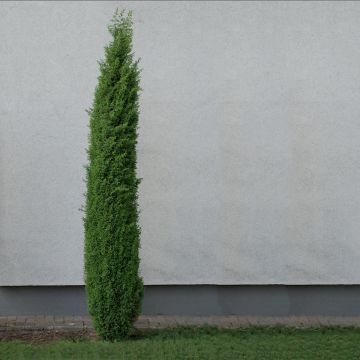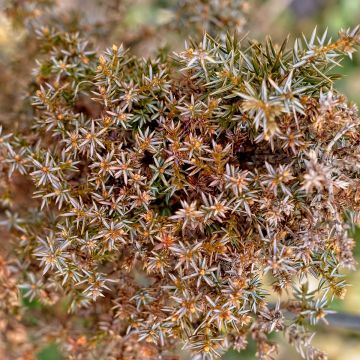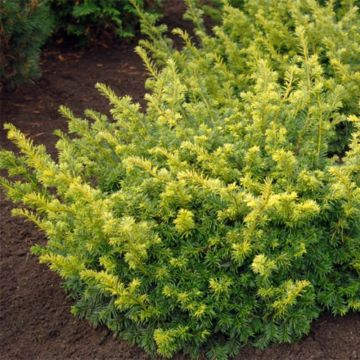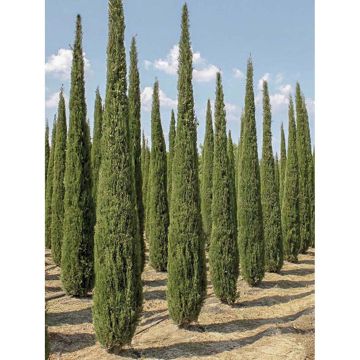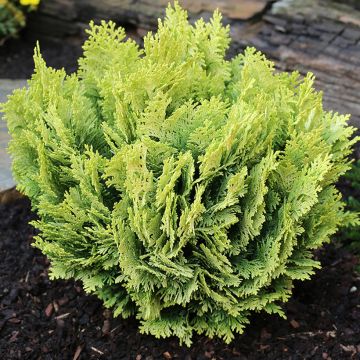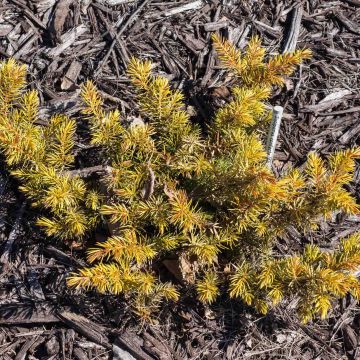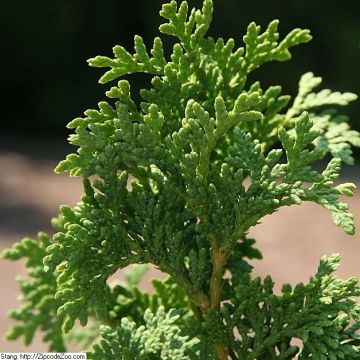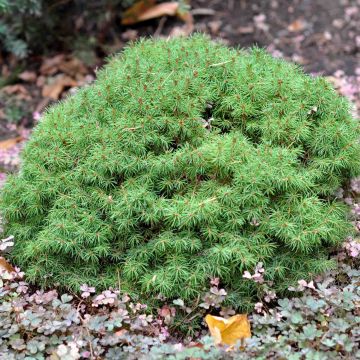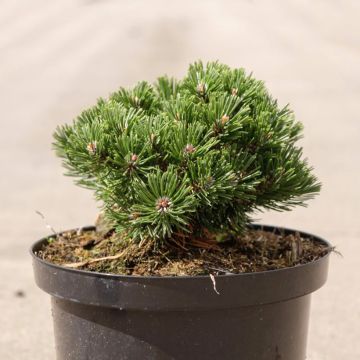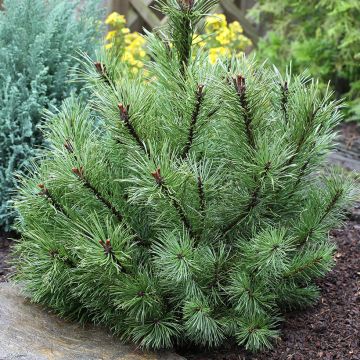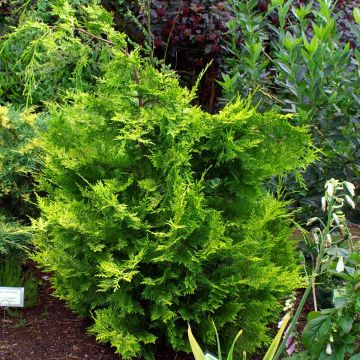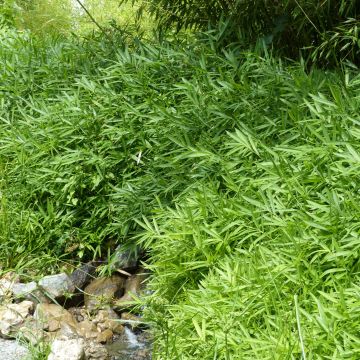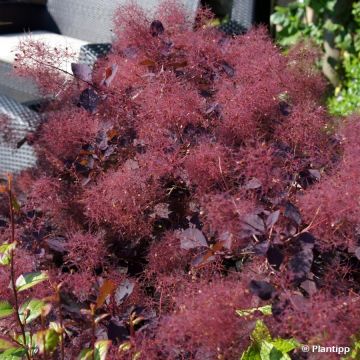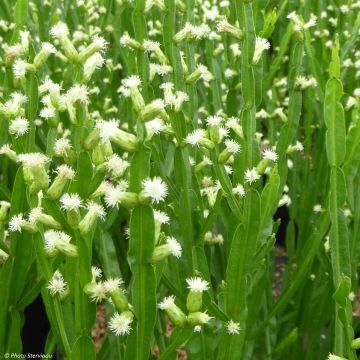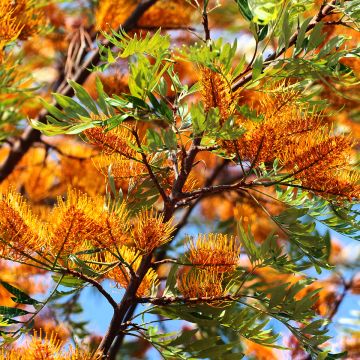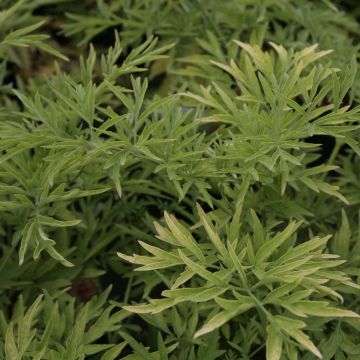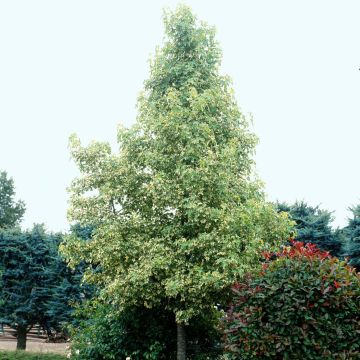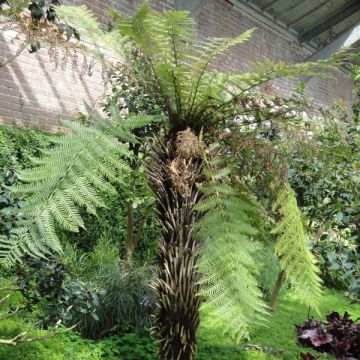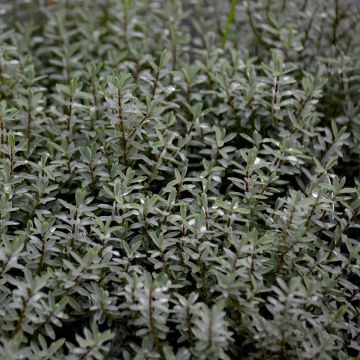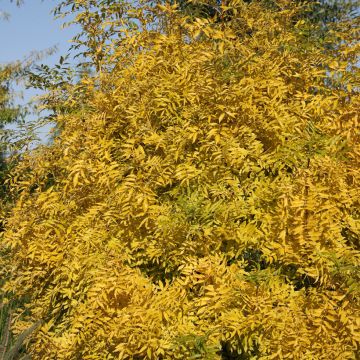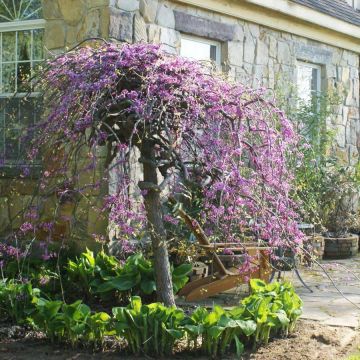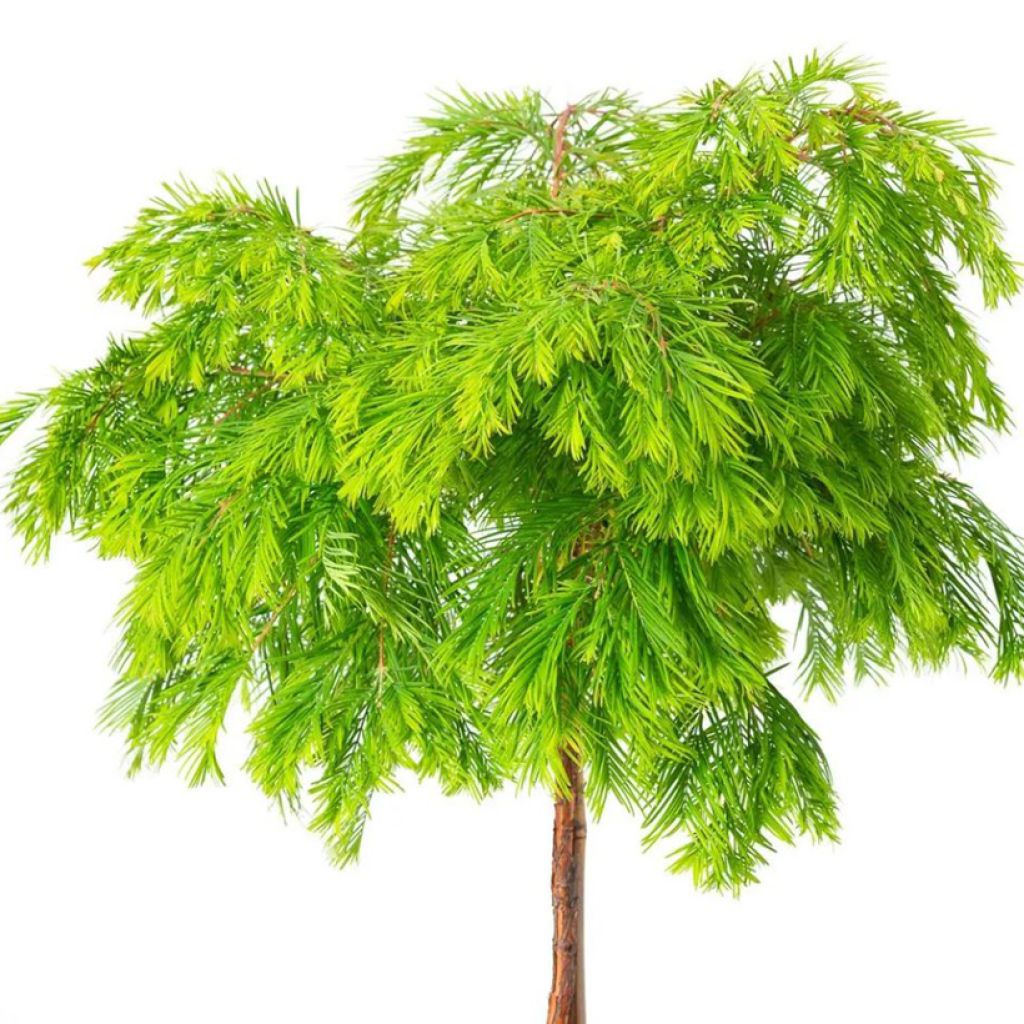

Metasequoia glyptostroboides Matthaei Broom - Dawn Redwood
Metasequoia glyptostroboides Matthaei Broom - Dawn Redwood
Metasequoia glyptostroboides Matthaei Broom
Dawn Redwood, Water Fir
Why not try an alternative variety in stock?
View all →This plant carries a 24 months recovery warranty
More information
We guarantee the quality of our plants for a full growing cycle, and will replace at our expense any plant that fails to recover under normal climatic and planting conditions.
From €5.90 for pickup delivery and €6.90 for home delivery
Express home delivery from €8.90.
Does this plant fit my garden?
Set up your Plantfit profile →
Description
Metasequoia glyptostroboides 'Matthaei Broom' is a dwarf Chinese sequoia with a ball-shaped habit, often grafted on a stem. It is a deciduous conifer that develops gracefully trailing branches adorned with soft and delicate feathery foliage. Its foliage, a tender green until summer, turns beautiful shades of orange to russet in autumn. Perfectly suited for small gardens, it thrives in moist to wet, neutral to acidic soil.
Metasequoia glyptostroboides, cousin of Sequoiadendron, is a large conifer belonging to the Taxodiaceae or Cupressaceae family, depending on the classification. It is native to China, specifically the western part of the Sichuan province, where it was only discovered in 1941. It is the only surviving species of a very ancient genus, dating back to a geological period called the Cretaceous, concurrent with the extinction of terrestrial dinosaurs and the beginning of an ice age. Its species name, glyptostroboides, refers to the cone-shaped fruits (strobiles) that are very similar to cypress fruits. Thanks to the natural variability of the plant, there are a number of attractive varieties (29 recorded to date) that are better suited for small gardens. This species shows very rapid growth in moist soil and thrives in temperate climates and non-calcareous, marshy soils.
Metasequoia glyptostroboides 'Matthaei Broom', also marketed under the names 'Matthaei', Headhunter, and Head Hunter, was selected at the Matthaei Botanical Gardens of the University of Michigan. It is a witches' broom. Witches' brooms appear as dense tufts that develop on the branches of certain trees, resulting from anarchic cell growth. It is a mutation that can be either natural or caused by a fungus or bacterium. The cultivar 'Matthaei Broom' was developed for its ornamental qualities and compact growth. Its growth is slow, initially forming an irregular oval shape before developing a more pronounced central axis. Mature specimens reach a height of 3 to 5 m and a width of 2 to 3 m. Its branches are trailing and its needle-like foliage, light green in spring and summer, turns yellow-orange in autumn before falling. This soft foliage is particularly appreciated for its delicate texture. The bark, although discreet, adds additional visual interest with its varied shades. This conifer is hardy and can withstand temperatures as low as -28 °C. Its good tolerance to air pollution makes it suitable for urban environments.
Metasequoia glyptostroboides 'Matthaei Broom' is ideal for small gardens. It can also be grown in a large container on a terrace. This "ball-shaped" conifer is graceful and will serve as a focal point in a landscape design. As it thrives in moist to wet soils, Hostas and Astilbes, for example, can be planted at its base. Iris sibirica, with their elegant flowers and sword-shaped foliage, complement the Chinese sequoia well. Carex (sedges), resembling ornamental grasses, highlight the grace of the trailing branches of the Metasequoia.
Report an error about the product description
Plant habit
Foliage
Botanical data
Metasequoia
glyptostroboides
Matthaei Broom
Cupressaceae
Dawn Redwood, Water Fir
Metasequoia glyptostroboides 'Maitthaei', 'Maitthaei Broom', Headhunter, Head Hunter
Cultivar or hybrid
Other Conifers A to Z
Planting and care
Metasequoia 'Matthaei Broom' can be planted from September to November and from February to April in deep, neutral to slightly acidic soil that is preferably fertile, moist to damp. While it can tolerate clay soils, it prefers loose, loamy or sandy soils that are not alkaline. Choose a sunny (but not scorching) spot or partial shade in hot climates. Add organic fertiliser during planting and water generously for the first three years, and during dry spells, as it should never lack water. In poor soil, you can apply a special conifer fertiliser every 2 years in April. Weed the soil in summer. This very hardy conifer (to approximately -28°C) is sensitive to hot summers, alkaline soils, and excessive dryness. Pruning is not necessary.
Planting period
Intended location
Care
This item has not been reviewed yet - be the first to leave a review about it.
Striking foliage shrubs
Haven't found what you were looking for?
Hardiness is the lowest winter temperature a plant can endure without suffering serious damage or even dying. However, hardiness is affected by location (a sheltered area, such as a patio), protection (winter cover) and soil type (hardiness is improved by well-drained soil).

Photo Sharing Terms & Conditions
In order to encourage gardeners to interact and share their experiences, Promesse de fleurs offers various media enabling content to be uploaded onto its Site - in particular via the ‘Photo sharing’ module.
The User agrees to refrain from:
- Posting any content that is illegal, prejudicial, insulting, racist, inciteful to hatred, revisionist, contrary to public decency, that infringes on privacy or on the privacy rights of third parties, in particular the publicity rights of persons and goods, intellectual property rights, or the right to privacy.
- Submitting content on behalf of a third party;
- Impersonate the identity of a third party and/or publish any personal information about a third party;
In general, the User undertakes to refrain from any unethical behaviour.
All Content (in particular text, comments, files, images, photos, videos, creative works, etc.), which may be subject to property or intellectual property rights, image or other private rights, shall remain the property of the User, subject to the limited rights granted by the terms of the licence granted by Promesse de fleurs as stated below. Users are at liberty to publish or not to publish such Content on the Site, notably via the ‘Photo Sharing’ facility, and accept that this Content shall be made public and freely accessible, notably on the Internet.
Users further acknowledge, undertake to have ,and guarantee that they hold all necessary rights and permissions to publish such material on the Site, in particular with regard to the legislation in force pertaining to any privacy, property, intellectual property, image, or contractual rights, or rights of any other nature. By publishing such Content on the Site, Users acknowledge accepting full liability as publishers of the Content within the meaning of the law, and grant Promesse de fleurs, free of charge, an inclusive, worldwide licence for the said Content for the entire duration of its publication, including all reproduction, representation, up/downloading, displaying, performing, transmission, and storage rights.
Users also grant permission for their name to be linked to the Content and accept that this link may not always be made available.
By engaging in posting material, Users consent to their Content becoming automatically accessible on the Internet, in particular on other sites and/or blogs and/or web pages of the Promesse de fleurs site, including in particular social pages and the Promesse de fleurs catalogue.
Users may secure the removal of entrusted content free of charge by issuing a simple request via our contact form.
The flowering period indicated on our website applies to countries and regions located in USDA zone 8 (France, the United Kingdom, Ireland, the Netherlands, etc.)
It will vary according to where you live:
- In zones 9 to 10 (Italy, Spain, Greece, etc.), flowering will occur about 2 to 4 weeks earlier.
- In zones 6 to 7 (Germany, Poland, Slovenia, and lower mountainous regions), flowering will be delayed by 2 to 3 weeks.
- In zone 5 (Central Europe, Scandinavia), blooming will be delayed by 3 to 5 weeks.
In temperate climates, pruning of spring-flowering shrubs (forsythia, spireas, etc.) should be done just after flowering.
Pruning of summer-flowering shrubs (Indian Lilac, Perovskia, etc.) can be done in winter or spring.
In cold regions as well as with frost-sensitive plants, avoid pruning too early when severe frosts may still occur.
The planting period indicated on our website applies to countries and regions located in USDA zone 8 (France, United Kingdom, Ireland, Netherlands).
It will vary according to where you live:
- In Mediterranean zones (Marseille, Madrid, Milan, etc.), autumn and winter are the best planting periods.
- In continental zones (Strasbourg, Munich, Vienna, etc.), delay planting by 2 to 3 weeks in spring and bring it forward by 2 to 4 weeks in autumn.
- In mountainous regions (the Alps, Pyrenees, Carpathians, etc.), it is best to plant in late spring (May-June) or late summer (August-September).
The harvesting period indicated on our website applies to countries and regions in USDA zone 8 (France, England, Ireland, the Netherlands).
In colder areas (Scandinavia, Poland, Austria...) fruit and vegetable harvests are likely to be delayed by 3-4 weeks.
In warmer areas (Italy, Spain, Greece, etc.), harvesting will probably take place earlier, depending on weather conditions.
The sowing periods indicated on our website apply to countries and regions within USDA Zone 8 (France, UK, Ireland, Netherlands).
In colder areas (Scandinavia, Poland, Austria...), delay any outdoor sowing by 3-4 weeks, or sow under glass.
In warmer climes (Italy, Spain, Greece, etc.), bring outdoor sowing forward by a few weeks.

































